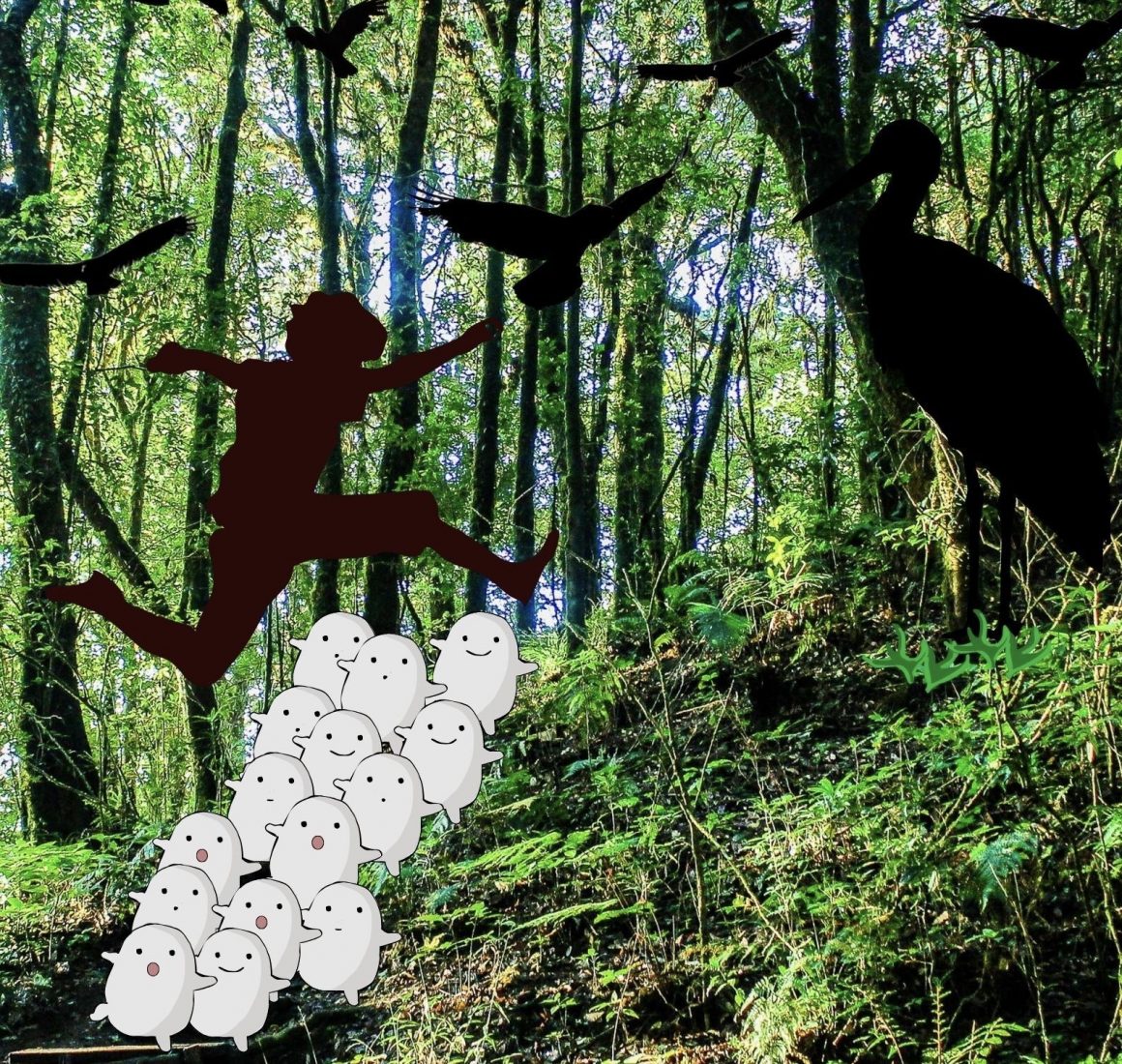
Movie Review: The Boy And The Heron
By Kshef Kamran, February 25 2024—
Studio Ghibli, a Japanese animation studio founded in 1985 by Hayao Miyazaki, Toshio Suzuki, Isao Takahata and Yasuyoshi Tokuma, is most commonly known for popular movies like Spirited Away, My Neighbour Totoro and Howl’s Moving Castle. It is notable for containing beautiful scenery, symbolism and soundtrack, as well as satisfying cooking scenes. Studio Ghibli’s recent release The Boy And The Heron is not just a simple coming-of-age story but follows the journey of healing of a 12-year-old boy named Mahito who struggles to settle in a new town after the death of his mother.
The Boy and the Heron contains representations of a war-stricken country and the death of Mahito’s mother signals the death of his innocence which often occurs in war. When a talking heron tells Mahito that his mother is still alive he enters an abandoned tower in search of her, which takes him to another world. This movie contains a lot of easter eggs from other Studio Ghibli films including this aspect of an alternate fantasy world and the house which resembles the cottage from Howl’s Moving Castle. This film incorporates two themes, with the first half of the movie exploring the dark themes of reality such as grief, loss and isolation in contrast to the second half with a shift in the narrative which explores whimsical themes. There are many films that fail to encompass the different sides of grief and loss, however, Miyazaki does a beautiful job depicting the sides of raw and honest parts of grief that Mahito experiences.
Birds are often used to symbolize freedom and beauty, although in this film the use of birds is used to represent the thoughts of grief that constantly plague Mahito. There is a breathtaking smear animation with fire that is used to convey the flashbacks to Mahito’s mother. The motif of fire is used to demonstrate a shift from something that is purely destructive to something that is beautiful is very powerful. Additionally, just like many other Ghibli films that contain mesmerizing landscapes, The Boy And The Heron is no exception to that.
The children’s book The Boy And The Blue Heron by Blanca Raniolo overlaps with this film. The heron helps the boy process his emotions through various adventures in this mindful children’s book, like in the film. Another novel that is represented through this film is How Do You Live? by Genzaburo Yoshino. This novel follows a 15-year-old boy named Koperu who experiences growth, grief and the human experience following the death of his father similar to Mahito.
The governing question for this film is seen as How Do You Live? The fantasy world that encompasses this film is one that Mahito uses in order to come to terms with his grief through the loss of his mother. The adventure that Mahito embarks on is with a young girl named Himi and later in the film it is revealed that Himi is the younger version of his mother. Getting to see her one last time and learning about how excited she was to have him brings a sense of closure to his grief. The concept of closure is further demonstrated through the fact that despite the challenges he faced he did not want to lose his step-mother as well so he fought to ensure her safety to prevent the loss of another loved one.
The world that Miyazaki created in this film pays homage to his career as symbolized through the Grand Uncle who is responsible for maintaining a balance in that world. The end of the film is a decisive moment for Mahito where he must choose to either continue the legacy of the Grand Uncle or return to real life, which is parallel to the position that Miyazaki is in with having the next generation carry on his legacy of filmmaking or continuing on a completely different path altogether. The theme of legacy is symbolized and reinforced through the past tributes to other Ghibli films that are incorporated within this movie, which represents Miyazaki ruminating on his career and coming to terms with the future generation of film creators.
Through the character of Mahito, Hayao Miyazaki encompasses themes including grief, closure, love and loss. Miyazaki made a beautiful movie intertwining his previous movies with symbols, themes and easter eggs. Through this film, another narrative from Miyazaki himself is depicted regarding his career and the future direction of animation where his legacy may seemingly come to an end but give rise to another generation that could be similar or different. All in all, after having watched many other Studio Ghibli movies this one is a 9.5/10 and an amazing film to experience.
